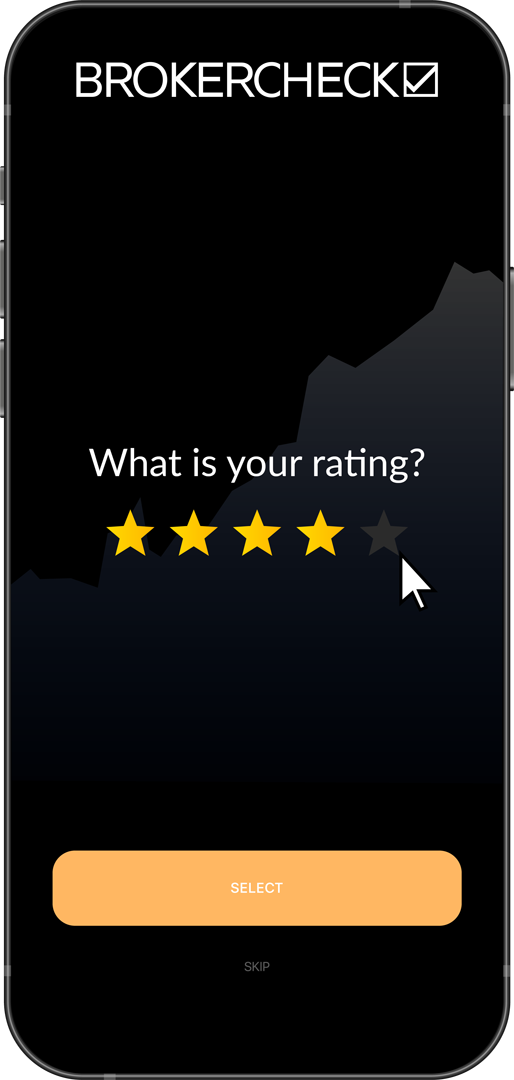1. Understanding the RSI (Relative Strength Index)
The RSI (Relative Strength Index) is a potent tool in the trader’s arsenal, a momentum oscillator that measures the speed and change of price movements. It is expressed on a scale of 0 to 100 and primarily used to identify overbought or oversold conditions in a market. When the RSI reads over 70, the market is typically considered overbought, while readings under 30 suggest an oversold market.
However, the RSI is more than just an overbought/oversold indicator. With its ability to identify divergence, it can signal potential reversals, making it an invaluable tool for trend traders. Divergence occurs when the price of an asset is moving in the opposite direction of the RSI. For instance, if the price is making higher highs while the RSI is making lower highs, this is known as bearish divergence and could signal a potential downward reversal.
RSI can also be used to identify areas of support and resistance. When the price is unable to break through the level at which the RSI peaks, this is considered a resistance level. Conversely, if the price cannot fall below the level at which the RSI bottoms out, this is a support level. By identifying these levels, traders can make more informed decisions about when to enter or exit trades.
Moreover, the RSI can be applied to any market, making it a versatile tool. Whether you’re trading stocks, forex, futures, or any other market, the RSI can provide valuable insights into market conditions. However, like all technical indicators, the RSI is not infallible and should be used in conjunction with other tools and analysis techniques to increase the probability of successful trades.
Through understanding and effectively utilizing the RSI, traders can enhance their trading strategy, making more informed decisions and potentially increasing their profitability. It’s a testament to the power of technical analysis and its ability to provide insights into market behavior.
1.1. Definition of RSI
RSI, or the Relative Strength Index, is a momentum oscillator that measures the speed and change of price movements. Developed by J. Welles Wilder, this technical analysis tool oscillates between zero and 100, providing insights into the current and potential future price movements of a security.
At its core, the RSI is a measure of the relative strength or weakness of a trading instrument. It is calculated using the average gain and average loss of a specific period, typically 14 periods. The RSI value is plotted as a line graph that moves between two extremes and can be interpreted for signals about market conditions.
The RSI can be a powerful tool in a trader’s arsenal, helping to identify potential entry and exit points. A high RSI, typically above 70, indicates a security is becoming overbought or overvalued and may be primed for a trend reversal or corrective pullback in price. Conversely, an RSI reading below 30 is viewed as a signal that the market may be oversold or undervalued, indicating a potential upward swing in price.
However, it’s crucial to remember that while the RSI is a valuable tool, it should not be used in isolation. Combining the RSI with other technical analysis tools and indicators can help traders make more informed decisions and potentially increase their chances of success.
Remember, the RSI is a momentum indicator, meaning it’s primarily used to identify overbought or oversold conditions in a market. However, this doesn’t mean that a high RSI always indicates an impending sell-off or that a low RSI is a sure sign of an upcoming rally. Market conditions are complex and influenced by a myriad of factors, so it’s essential to use the RSI as part of a broader trading strategy.
1.2. The Mathematics Behind RSI
Understanding the mathematics behind the Relative Strength Index (RSI) is a crucial step in harnessing its full potential to make successful trading decisions. The RSI is calculated using the formula: RSI = 100 – (100 / (1 + RS)), where RS is the average gain of up periods divided by the average loss of down periods, over a specified period.
To illustrate, let’s say you’re working with a 14-day period. You would first calculate the average gain and the average loss over these 14 days. If the average gain exceeds the average loss, the RSI will ascend towards 100. Conversely, if losses are more prevalent, the RSI will descend towards 0.
The beauty of the RSI lies in its ability to quantify the momentum of a particular asset. An RSI value of 70 or above typically signifies an overbought condition, suggesting a potential price pullback. On the other hand, an RSI reading of 30 or below indicates an oversold condition, hinting at a possible price rebound.
RSI Divergence is another critical concept to understand. It occurs when the price of an asset and the RSI are moving in opposite directions. This divergence can often signal a potential reversal in the price trend, providing traders with a tactical advantage.
However, while the RSI is a powerful tool, it is not infallible. False signals can occur, and it’s essential to use the RSI in conjunction with other technical analysis tools and indicators. By comprehending the mathematics behind the RSI, traders can better interpret its signals and apply this knowledge to their trading strategy, enhancing their ability to make profitable trades.
1.3. Importance of RSI in Trading
The Relative Strength Index (RSI), a crucial tool in the arsenal of many traders, is a momentum oscillator that measures the speed and change of price movements. Its readings range from 0 to 100, and it is primarily used to identify overbought or oversold conditions in a market.
When the RSI exceeds 70, the market is considered overbought, suggesting that a price correction may be imminent. Conversely, an RSI below 30 indicates an oversold market, which could potentially signal an upcoming price increase. This oscillation provides traders with a unique advantage in predicting potential market reversals, a key to successful trading.
However, the RSI is not merely a binary overbought/oversold indicator. It also helps traders identify trends and confirm potential price breakouts. For instance, during an uptrend, the RSI tends to remain above 30 and frequently hits 70 or above. During a downtrend, the opposite is true, with the RSI often staying below 70 and frequently dipping below 30.
Furthermore, RSI can help confirm price breakouts by comparing the price action of the market to the RSI’s own movements. If the market is making new highs but the RSI isn’t, this divergence could indicate that the breakout is not as strong as it appears, and a reversal may be on the horizon.
Incorporating the RSI into your trading strategy can provide a more comprehensive picture of market conditions. But remember, no single indicator should be used in isolation. Always employ the RSI in conjunction with other technical analysis tools to ensure the most accurate reading of the market.
2. Applying RSI in Trading
Relative Strength Index (RSI) is a versatile tool that can be implemented in trading to gain a competitive edge. With its ability to measure the speed and change of price movements, it’s a favorite among traders. But how exactly do you apply RSI in your trading strategies?
Firstly, it’s essential to understand that RSI operates within a range of 0 to 100 and typically, readings below 30 indicate an oversold market condition, while readings above 70 signal an overbought market. By identifying these extremes, traders can anticipate potential market reversals and adjust their strategies accordingly.
Another powerful application of RSI is identifying divergences. A divergence occurs when the price of an asset is moving in the opposite direction to the RSI. For instance, if the price is making higher highs while the RSI is making lower highs, this could indicate a potential bearish reversal. Conversely, if the price is making lower lows while the RSI is making higher lows, a bullish reversal may be on the horizon.
RSI trend lines are also a valuable tool for traders. Similar to how trend lines are drawn on price charts, traders can draw trend lines on the RSI indicator to identify potential breakout points.
Lastly, RSI swing failures can provide additional trading opportunities. An RSI swing failure occurs when the RSI fails to reach an overbought or oversold level before changing direction. This can often precede a price reversal, providing a timely signal for traders to enter or exit a position.
Remember, like any trading tool, RSI is not infallible and should be used in conjunction with other indicators and analysis techniques for the best results. By understanding and applying these RSI strategies, traders can enhance their decision-making process and potentially increase their trading success.
2.1. Setting Up RSI on Your Trading Platform
Setting up the Relative Strength Index (RSI) on your trading platform is the first step towards mastering this powerful tool for market analysis. It’s a straightforward process, regardless of the platform you’re using. Begin by locating the ‘indicators’ or ‘studies’ section in your platform interface. Within this section, you should find ‘RSI’ or ‘Relative Strength Index’ listed among the available options.
Once you’ve selected RSI, you’ll need to configure it to your preferences. The standard setting for RSI is a period of 14, meaning the RSI calculation is based on the last 14 trading periods. However, you can adjust this to a higher or lower number depending on your trading style. Short-term traders might prefer a smaller number, like 7, for a more responsive indicator, while long-term traders might opt for a larger number, like 21 or 28, for a smoother line that filters out market noise.
Remember, there’s no ‘one-size-fits-all’ setting for RSI; it’s crucial to experiment with different parameters to find the setup that works best for you. Once you’ve chosen your period, you’ll also need to decide on your overbought and oversold levels, which are typically set at 70 and 30, respectively. These levels indicate when a security may be getting overbought (and thus due for a price pullback) or oversold (and potentially ripe for a price bounce).
Customizing these levels can provide additional insight into market conditions. For instance, if you’re trading in a volatile market, you might want to raise your overbought level to 80 and lower your oversold level to 20 to reduce the likelihood of false signals.
After you’ve made these adjustments, the RSI will appear as an oscillating line beneath your price chart. You’re now ready to start using this versatile indicator to inform your trading decisions. But remember, while the RSI can be a valuable tool, it should never be used in isolation. Always corroborate its signals with other indicators and analysis methods to ensure you’re making the most informed trading decisions possible.
2.2. Reading RSI Signals
Decoding the RSI is like learning a new language. It’s a skill that can unlock a wealth of information about potential market movements. The RSI, or Relative Strength Index, is a momentum oscillator that measures the speed and change of price movements. It’s typically used to identify overbought or oversold conditions in a market.
When the RSI surpasses 70, it’s a signal that the market may be overbought, and a downward correction could be imminent. On the other hand, if the RSI dips below 30, it suggests that the market is oversold, and an upward correction could be on the horizon. But these aren’t hard and fast rules. In a strong trending market, the RSI can remain overbought or oversold for extended periods.
Divergence is another powerful RSI signal that traders should keep an eye out for. If the price is making higher highs but the RSI is making lower highs, it’s a sign of bearish divergence, which could indicate a potential price reversal. Conversely, if the price is making lower lows but the RSI is making higher lows, it’s a sign of bullish divergence, suggesting a possible upward price move.
RSI trend lines are another useful tool for traders. Just like price trend lines, RSI trend lines can help identify potential breakout or breakdown points. If an RSI trend line is broken, it could signal a shift in market momentum.
However, it’s important to remember that RSI is not infallible. It’s a tool, not a crystal ball. It should be used in conjunction with other indicators and analysis techniques to increase the odds of a successful trade. As always, risk management should remain a key component of any trading strategy.
2.3. Incorporating RSI into Trading Strategies
Integrating RSI into your trading strategies can be a game-changer, providing you with an additional layer of information to make more informed decisions. The Relative Strength Index (RSI) is a momentum oscillator that measures the speed and change of price movements. It’s typically used to identify overbought or oversold conditions in a market, providing potential entry and exit points.
When the RSI exceeds 70, it’s generally considered overbought, and when it falls below 30, it’s considered oversold. However, these are not strict rules, and many traders also look for divergences between price and RSI or use the 50 level to gauge market sentiment. For instance, if the RSI is above 50, the market is considered bullish, and if it’s below 50, it’s considered bearish.
But the power of RSI goes beyond these basic uses. Advanced traders often incorporate RSI into their trading strategies in a more nuanced way. They may use multiple time frame analysis, looking at the RSI on both the daily and weekly charts to get a broader perspective of the market. They may also use RSI in conjunction with other indicators or chart patterns to confirm or refute potential trading signals. For example, a bullish engulfing candlestick pattern accompanied by an oversold RSI could provide a strong buy signal.
RSI is a versatile tool, and its effectiveness can be enhanced when used in conjunction with other tools and techniques. It’s important to remember, however, that no indicator is foolproof. Always use RSI as part of a comprehensive trading strategy that includes risk management. This will help you to navigate the market’s ups and downs and protect your trading capital.
3. Common Mistakes When Using RSI
Overreliance on Overbought and Oversold Levels is one of the most common pitfalls traders fall into when using the Relative Strength Index (RSI). Many assume that an RSI reading above 70 signals an overbought condition, hence a sell signal, while a reading below 30 indicates an oversold condition, thus a buy signal. However, in strong trending markets, these levels can remain overbought or oversold for extended periods, leading to premature trades.
Another frequent error is the Misinterpretation of Divergence. While it’s true that a divergence between price and RSI can signal a potential trend reversal, it’s not a standalone indicator. Traders often mistake these divergences as immediate sell or buy signals without considering other market factors, resulting in ill-timed trades.
Lastly, the Ignorance of the RSI’s True Nature can lead to disastrous trading decisions. The RSI is a momentum oscillator, meaning it measures the speed and change of price movements. Traders often misunderstand this and use RSI as a primary trend indicator, which it is not designed for. Understanding the RSI’s true purpose and using it in conjunction with other technical analysis tools can significantly improve trading results.
3.1. Ignoring Market Context
Ignoring market context can be a critical error when utilizing the Relative Strength Index (RSI) as part of your trading strategy. The RSI is a momentum oscillator that measures the speed and change of price movements, providing traders with potential buy and sell signals. However, it’s essential to remember that the RSI does not operate in isolation. It’s influenced by a myriad of factors that constitute the broader market context.
The RSI is typically used in conjunction with other indicators and market analysis techniques. For example, understanding the current market trend is vital. If the market is in a strong uptrend, an overbought RSI reading might not be a reliable sell signal. Similarly, in a strong downtrend, an oversold RSI might not necessarily signify a buying opportunity.
Market volatility is another crucial factor to consider. During periods of high volatility, the RSI can remain overbought or oversold for extended periods. Traders who ignore this context and rely solely on the RSI for trading signals may find themselves entering or exiting trades prematurely.
Furthermore, it’s important to consider the market’s overall sentiment. If the market sentiment is overwhelmingly bullish, even a high RSI reading might not deter further price increases. Conversely, if the market sentiment is bearish, a low RSI may not be enough to stimulate a price rise.
In essence, while the RSI is a powerful tool in a trader’s arsenal, its effectiveness can be significantly enhanced when used in conjunction with a comprehensive understanding of the broader market context. Therefore, traders should always consider the market trend, volatility, and sentiment when interpreting RSI signals. This holistic approach can help traders make more informed decisions, potentially leading to more successful trades.
3.2. Relying Solely on RSI for Trading Decisions
While the Relative Strength Index (RSI) is a powerful tool in the trader’s arsenal, it’s essential to understand that relying solely on RSI for trading decisions can be a risky endeavor. The RSI, as an oscillator, provides valuable insights into market conditions, indicating overbought or oversold scenarios. However, it should not be the only indicator guiding your trading decisions.
RSI is best used in conjunction with other technical analysis tools. Pairing it with trend lines, moving averages, or candlestick patterns can provide more robust signals, reducing the risk of false positives. For instance, an overbought RSI in an uptrend may not necessarily signal a market reversal; it could be a temporary pullback before the trend resumes. In such cases, confirmation from other indicators can help avoid premature exits.
Moreover, understanding the market context is crucial. RSI can behave differently in trending and range-bound markets. In a strong uptrend, the RSI can remain overbought for extended periods, and in a downtrend, it can stay oversold. Trading against the trend solely based on RSI readings can lead to losses.
Market volatility is another factor that can affect RSI readings. During periods of high volatility, the RSI may swing rapidly between overbought and oversold levels, potentially leading to misleading signals.
Remember, no indicator is infallible. The RSI is a valuable tool, but it is not a standalone solution. Successful trading requires a balanced, multi-faceted approach that considers multiple indicators, market context, and risk management strategies.
3.3. Misinterpreting RSI Signals
In the realm of trading, the Relative Strength Index (RSI) is a popular momentum oscillator that measures the speed and change of price movements. It’s an invaluable tool, but it’s also one that’s frequently misunderstood. Misinterpreting RSI signals can lead to costly mistakes, so it’s crucial to understand how to use it correctly.
The RSI oscillates between zero and 100, and traditionally, the market is considered overbought when the RSI is above 70 and oversold when it’s below 30. However, one of the most common mistakes traders make is assuming that the market will immediately reverse when these levels are hit. It’s important to remember that overbought does not necessarily mean overvalued, and oversold does not necessarily mean undervalued. Markets can remain overbought or oversold for extended periods, and price can continue to trend in the same direction.
Another common error is treating the RSI as a standalone indicator. While the RSI can provide valuable insight, it’s best used in conjunction with other tools and indicators. For instance, using the RSI in combination with trend lines, support and resistance levels, and chart patterns can provide a more comprehensive picture of the market.
Divergences are another key aspect of the RSI that traders often misinterpret. A divergence occurs when the price of an asset is moving in one direction and the RSI is moving in the opposite direction. This can be a powerful signal of a potential market reversal, but it’s not a guarantee. Many traders mistakenly view divergences as a surefire sign of an imminent market turn, but in reality, divergences can persist for a long time before a reversal actually occurs.
Lastly, it’s important to adjust the RSI settings to fit your trading style and the particular market you’re trading. The default setting for the RSI is 14 periods, but this might not be optimal for all trading scenarios. Shorter settings can make the RSI more sensitive and result in more overbought and oversold readings, while longer settings can make the RSI less sensitive and result in fewer readings.
Understanding RSI signals and how to interpret them correctly can greatly enhance your trading strategy and help you make more informed decisions in the market. So, don’t fall into the trap of misinterpreting RSI signals – take the time to learn how to use this powerful tool effectively.
4. Tips for Successful RSI Trading
Understanding the RSI is pivotal for any trader who wants to maximize their profits. The Relative Strength Index (RSI) is a momentum oscillator that measures the speed and change of price movements. When used correctly, it can be an incredibly valuable tool in your trading arsenal.
The first tip for successful RSI trading is knowing when the market is overbought or oversold. The RSI moves between zero and 100, and traditionally, readings over 70 indicate an overbought market, while readings under 30 suggest an oversold market. However, these levels are not set in stone and can be adjusted to better fit the volatility of the specific asset you’re trading.
Identifying divergences is the second tip. A divergence occurs when the price of an asset is moving in the opposite direction of the RSI. This can be a strong indication that the current trend is about to reverse, providing an opportune moment to enter or exit a trade.
Using the RSI in conjunction with other technical indicators is the third tip. While the RSI can provide valuable insights on its own, it’s often most effective when used alongside other indicators. For example, using it in tandem with a Moving Average Convergence Divergence (MACD) indicator can help confirm potential buy and sell signals.
The final tip is practicing patience. Like all trading strategies, success with the RSI doesn’t come overnight. It requires practice, patience, and a willingness to learn from your mistakes. By keeping these tips in mind, you can start to harness the power of the RSI and make more informed trading decisions.
4.1. Using RSI in Conjunction with Other Indicators
The power of the Relative Strength Index (RSI) is amplified when used in tandem with other technical indicators. Combining RSI with Moving Average Convergence Divergence (MACD), for instance, can provide a more comprehensive picture of potential market movements. RSI can identify overbought or oversold conditions, while MACD can confirm the trend. If the MACD shows a bullish trend and the RSI is below 30 (oversold), it could indicate a strong buy signal.
Another potent combination is RSI and Bollinger Bands. Bollinger Bands can provide information about the volatility and price levels that are in focus. When the price touches the upper band and the RSI is above 70 (overbought), it could be a sell signal. Conversely, if the price touches the lower band and the RSI is below 30, it might be a good time to buy.
Pairing RSI with the Stochastic Oscillator can also be effective. Both are momentum indicators, but they calculate momentum differently. If both indicators show the market as being overbought, it may be a strong signal to sell, and vice versa for buying.
These are just a few examples of how RSI can be used in conjunction with other indicators to make more informed trading decisions. However, it’s crucial to remember that no indicator is foolproof. Always use them as part of a broader trading strategy, incorporating other technical analysis tools, fundamental analysis, and risk management techniques.
4.2. Fine-Tuning RSI Settings for Different Market Conditions
Mastering the art of fine-tuning RSI settings can be a real game-changer for traders who understand the power of technical analysis. The default RSI setting of 14 periods is a universally accepted standard, but savvy traders know that adjusting these parameters according to the market conditions can yield more precise signals.
During volatile market conditions, consider shortening the RSI period to 7 or even 5. This accelerates the RSI’s response to price changes, allowing you to capture quick swings. However, be aware that this could also increase the chances of false signals.
In contrast, during slow or ranging markets, extending the RSI period to 20 or even 25 can help filter out the noise and provide more reliable overbought and oversold signals. This approach is particularly useful when you are looking for long-term investment opportunities rather than short-term trades.
Remember, there’s no one-size-fits-all setting. The ideal RSI setting depends on your trading style, risk tolerance, and the market’s volatility. Experiment with different settings on a demo account before applying them to your live trades.
Finally, don’t rely solely on RSI. Use it in conjunction with other technical indicators and fundamental analysis for a well-rounded trading strategy. The RSI is a powerful tool, but it’s not infallible. It’s part of your trading toolbox, not the entire kit. The real key to successful trading lies in a balanced, diversified approach.
4.3. Practicing RSI Trading with a Demo Account
Getting hands-on experience with RSI trading can be a game-changer for your trading career. A demo account serves as an excellent platform to practice RSI trading without risking real money. Here, you can experiment with the RSI indicator, understand its nuances, and devise your trading strategies.
Understanding the RSI signals is crucial before you dive into real trading. In a demo account, you can observe how the RSI line fluctuates between 0 and 100, providing overbought and oversold signals. When the RSI exceeds 70, it indicates an overbought condition, suggesting a possible price reversal. Conversely, if the RSI dips below 30, it signifies an oversold condition, hinting at a potential upward price movement.
Practicing RSI-based trading strategies in a demo account can help you gain confidence. For instance, you can try the ‘RSI Divergence’ strategy where you look for discrepancies between the price movement and RSI trend. If the price makes a new high, but the RSI fails to surpass its previous high, it’s a bearish divergence, indicating a potential price drop. Similarly, if the price makes a new low, but the RSI doesn’t reach its previous low, it’s a bullish divergence, suggesting a possible price rise.
Monitoring your performance in the demo account is as important as practicing. Keep a trading journal to track your trades, review your strategies, and learn from your mistakes. Remember, the goal is not to win every trade but to improve your decision-making skills and develop a disciplined trading approach.
Transitioning to a live account should be considered only when you are consistently profitable in the demo account and comfortable with your trading strategy. Be prepared for the psychological shift as real money trading can induce emotions that you might not have experienced while trading in the demo account.
Practicing RSI trading with a demo account is an invaluable step towards becoming a successful trader. It provides a risk-free environment to learn, practice, and refine your trading skills. So, make the most of it and pave your path to trading success.










